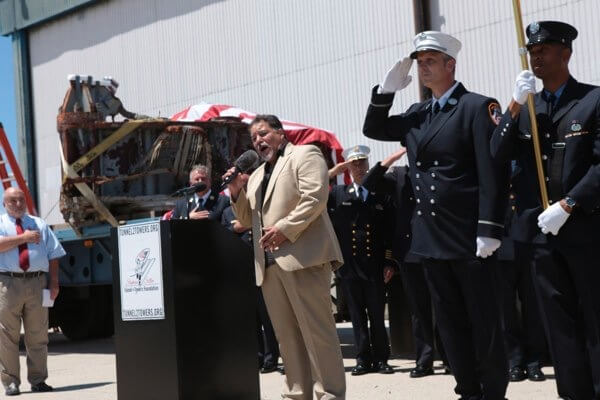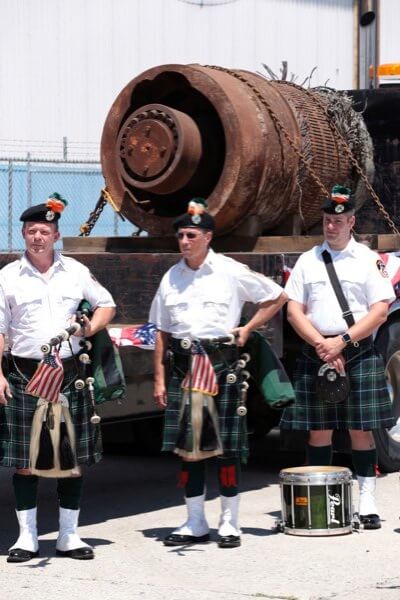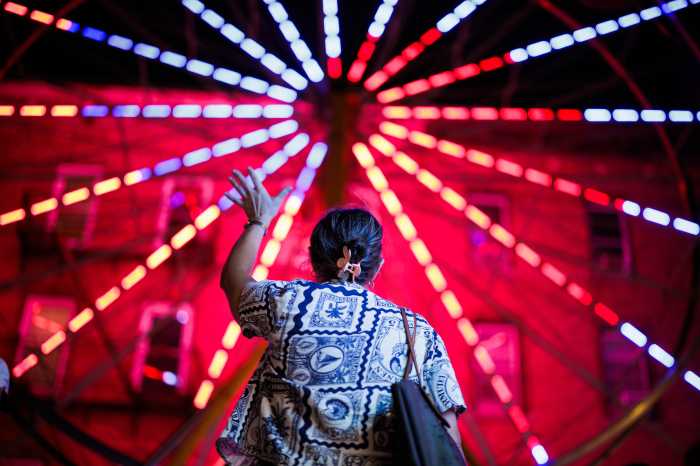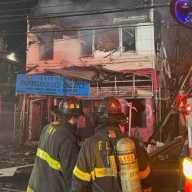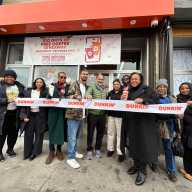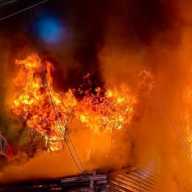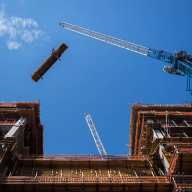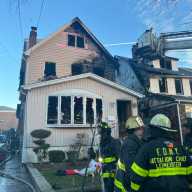By Patrick Donachie
In the aftermath of the terrorist attacks on Sept. 11, 2001, Hangar 17 at John F. Kennedy International Airport was put into service to house artifacts recovered from the site—from battered ambulance cruisers to retail clothing covered in ashes.
Now, Hangar 17 is being cleared of the artifacts, and the final significant pieces were removed Tuesday in a ceremony to honor the lives lost and the memory of the attacks.
“This hangar collected history. It told stories of people running from around the city to the World Trade center. It told stories of people running through the tunnels to the tower,” FDNY Assistant Chief Joseph Pfeifer said during the ceremony. “But the steel behind us has more to do than just remembering. It provides us hope that we will again run into those dangerous situations.”
The event was conducted by the Stephen Siller Tunnel to Towers Foundation, which is named in honor of an FDNY officer who ran through the Brooklyn Battery Tunnel to reach his squad on the day of the disaster. He died along with 11 other members of his engine.
In a parking lot adjacent to the hangar, multiple speakers took the podium, their voices amplified above the sound of taxiing jets nearby. Behind the podium were two flatbed trucks holding the last artifacts. One truck held a 35,000-pound express elevator motor and a 40,000-pound column from the Twin Towers’ underground parking structure, while the other held a 40,000-pound piece of the North Tower’s massive television antenna.
The foundation hopes to eventually house the artifacts in a permanent exhibition, according to John Hodge, the foundation’s chief operating officer. The organization also created a mobile exhibit that travels throughout the country, educating visitors about the attack.
NYPD Chief of Citywide Operations Thomas Purtell spoke about the massive undertaking of rescue and cleanup in the attack’s aftermath and the logistics that were employed. He recalled the Red Cross Tent and Bellevue Hospital’s on-site morgue, as well as the Fresh Kills landfill where debris was sent, but he noted the one place that had never been demobilized was Hangar 17.
“This is burned in our psyche,” he said. “We will never forget this.”
The foundation’s work was a testament to Siller’s family and friends, according to Catherine Christman, Siller’s cousin. She said the foundation’s annual Tunnel to Towers Run, which retraces the path Siller took to reach his FDNY companions on Sept. 11, came about organically in the aftermath of the loss.
“One of his friends said, ‘Why don’t we just do what Stephen did that day?’” she said. “They could have cursed the darkness and been bitter, but they did this.”
Christman said there were 2,500 participants at the first race in 2002, and she is expecting between 25,000 and 30,000 for the upcoming run on Sunday, Sept. 25. More information on joining the run can be found on the foundation’s website.
With an NYPD color guard and bagpipers on hand, the flatbed trucks slowly exited the lot on the way to a new storage space. Hodge said the Port Authority, which had operated the hangar and offered space for the artifacts in the years since the attack, were incredible partners.
“This is the end to another era,” he said. “This building and the people who have been in it have been great stewards.”
Reach reporter Patrick Donachie by e-mail at pdona

